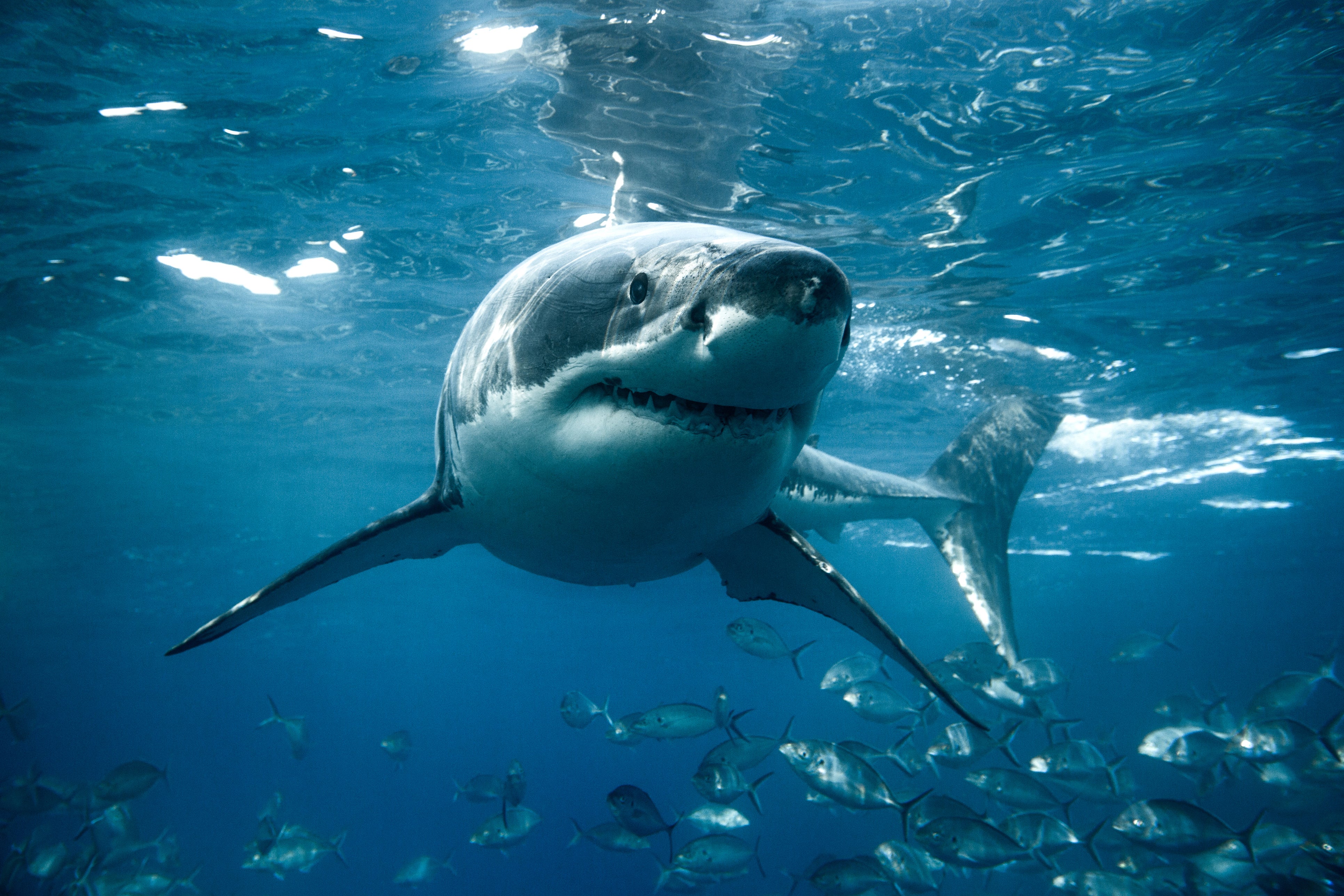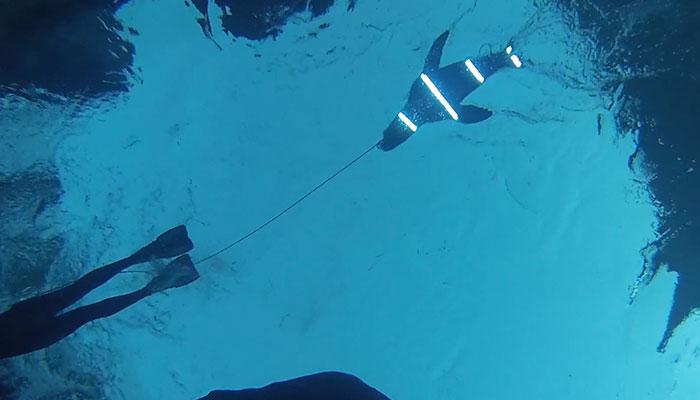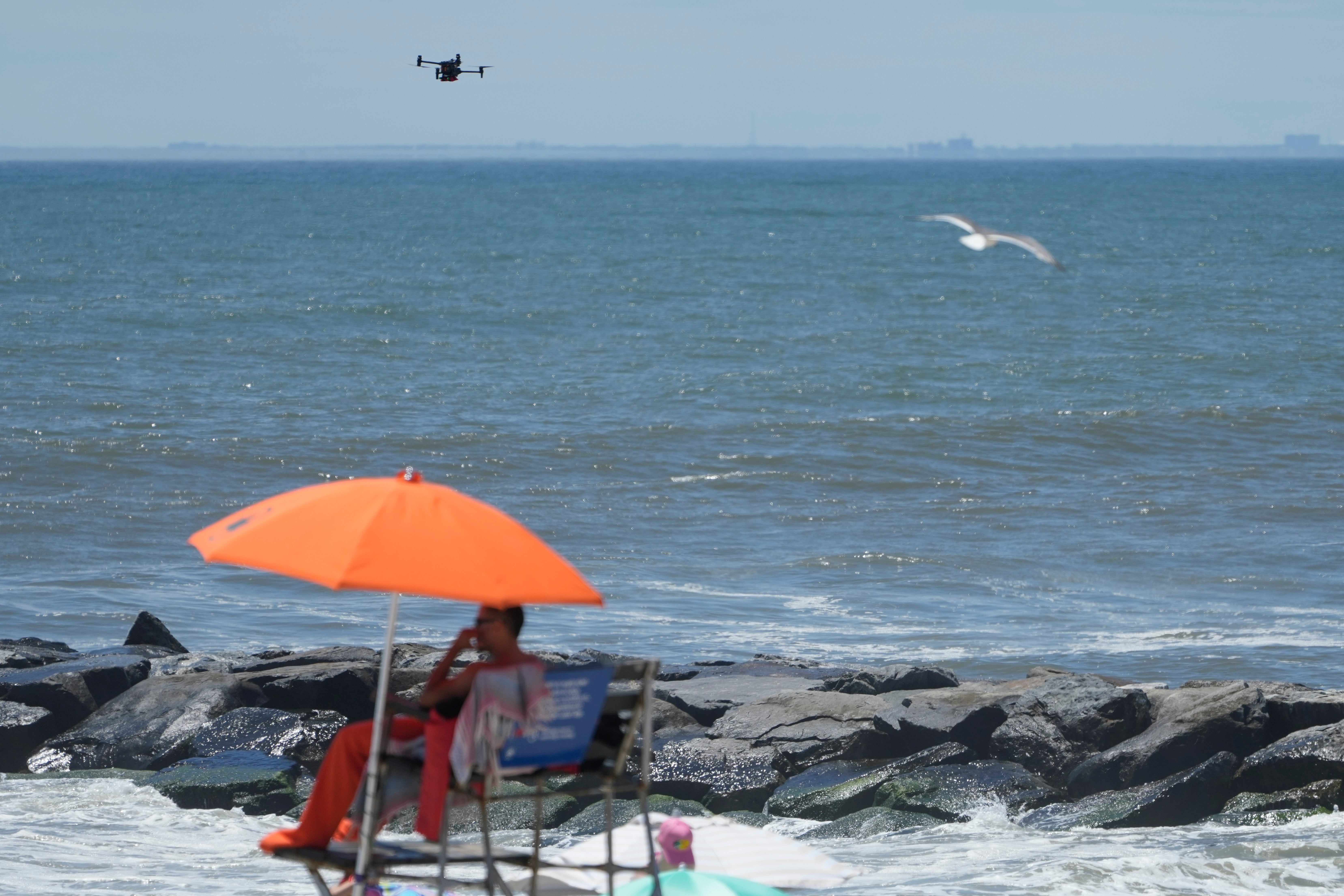The Independent's journalism is supported by our readers. When you purchase through links on our site, we may earn commission.
Convincing sharks that surfers aren't seals might be the way to avoid attacks
Dozens of unprovoked shark bites are reported in ocean waters around the US every year. But preventing incidents has proven tricky
Dozens of Americans are bitten by sharks each year. The incidents are terrifying for swimmers and surfers alike, but how they can be stopped remains unclear — although scientists think they might have one possible answer.
For sharks looking up from the waters’ murky depths, it can be hard to tell what humans are. On the backs of surfboards, surfers appear like seals. In confusion and hunger, the sharks may lunge expecting their usual prey.
Dr. Gavin Naylor, the director of the Florida Program for Shark Research at the Florida Museum of Natural History, told The Independent, that this year is shaping up to be “a fairly low incident year” when it comes to shark bites, with recent incidents off Hawaii and Florida not seen as unusual.
Some of the strategies water lovers use to try to prevent incidents and deter the killer fish, however, certainly are. Some do yoga in the water to try to calm the sharks, some play orca music while others wear magnet ankle bracelets — although Naylor isn’t convinced those measures work.
“If anything, it might actually do the opposite, because it gives people a false sense of security,” he said.

New York City saw its first attack in decades last year at Rockaway Beach, and the victim was left with a permanent disability. The US saw 36 unprovoked shark bites last year, two of which were fatal. Although that number was lower than the 41 incidents recorded in 2022, scientists are still looking at ways to reduce them further.
In a new study from researchers at Australia’s Macquarie University, the authors say their possible solution is non-invasive and may protect surfers. The work was published earlier this month in the journal Current Biology.
“If it’s good visibility water and they see something that looks like a seal – and you can prevent it from looking like a seal – then you can use that to your advantage to mitigate the situation,” Naylor, who was not involved in the study, said.
Drawing inspiration from a little fish called the plainfin midshipman — a strange toadish-looking fish that which photospores that produce light on their undersides and disrupt the shapes of their silhouettes – Professor Nathan Hart, Dr. Laura Ryan, and their colleagues put LED lights on seal-shaped foam decoys.
In a great white shark hot spot in South Africa’s Mossel Bay, they towed the sharks during multiple trips over the course of six years. They determined that lights placed in stripes across the decoys that were perpendicular to their movement were an effective deterrent.
“It’s sort of like an invisibility cloak but with the exception that we are splitting the object, the visual silhouette, into smaller bits,” Hart said in a statement. “It’s a complex interaction with the shark’s behavior. The lights have to be a certain pattern, a certain brightness.”

The effectiveness of their method, they said, has to do with the biology and hunting ability of great whites. Great whites rely on their eyes, but have poor sharpness of vision and are likely color blind.
To test this, Naylor said they use a shark’s retina, wire it up to a monitor, and shine different wavelengths of light on it. They look for where there’s a response. Alternatively, they can also look for rotten cells.
He noted that of the Florida Museum of Natural History’s 7,000 records in its International Shark Attack File database – the world’s only scientifically documented and comprehensive database of all known shark attacks – 60 percent are in low-visibility water, suggesting the sharks are mistaking humans for prey.
“It makes perfect sense that if you break up the contrasts so that the animals don’t recognize the shape as something that they would be interested in eating, then it should work,” he said.
But, there are multiple challenges to preventing these incidents. One is that there are tens of species just around the waters off the East Coast alone. Sharks may have similar physical features, but they function “very differently.”

And, all bets are off if you’re using a method for white sharks on tiger sharks, he said. While white sharks tend to go for marine mammals, tiger sharks are non-selective and “more Catholic” in their diet.
“If what they perceive is food and it doesn’t look like food anymore, then we’re making progress,” Naylor said.
Depending on how hungry the sharks are, he noted, they might ignore any stimulus they don’t like. Notably, warming waters fueled by human-caused climate change are shifting prey distribution and hunting grounds for sharks. Some are following food closer to the shoreline.
Ultimately, Naylor believes the solutions will come from marine biologists and those who study sharks.
“It’s a newsworthy endeavor,” he said. “There’s been quite a lot of people claiming that they’ve got the secret sauce.”
Some people concerned about the very rare chance of a bite may be comforted to ride a surfboard with gadgets that could decrease the risk from 1 in 100 million to 1 in 200 million.
“All of these shark attack prevention things are to allow people to do what they like to do,” said Naylor.
Join our commenting forum
Join thought-provoking conversations, follow other Independent readers and see their replies
Comments
Bookmark popover
Removed from bookmarks